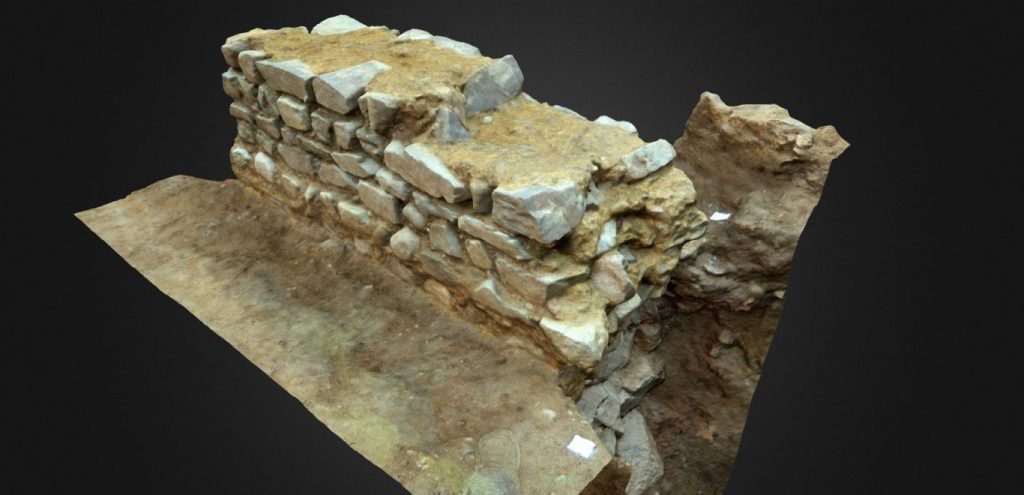Sophisticated photogrammetry is being widely used by archaeologists today because it provides a quick, extremely versatile and cost-effective method of recording and analysing complex objects and surfaces using software that turns multiple normal two-dimensional digital photographs into a three-dimensional model.
During recent excavations at Southgates in Leicester, archaeologists at University of Leicester Archaeological Services (ULAS) used this technique to record a number of complicated archaeological features. Because photographs and drawings are two-dimensional, they do not always best show nuances in spatial relationships that a three-dimensional model can; and this technique is becoming increasingly invaluable in preserving information that otherwise might be lost.
Photogrammetry software looks for points of commonality in overlapping photographs of a single object or surface from which it can extrapolate a three-dimensional point cloud which can be converted to a polygon mesh. The photographs can then also be used to render the final surface reconstruction to create a photo-realistic effect.
During the Southgates excavation a number of features, including a Roman stone wall, a section of collapsed Roman mosaic floor and a medieval stone-lined pit, were recorded in this manner. Today, the Roman wall and the mosaic has been carefully preserved intact beneath the new development on the site but the medieval pit was fully excavated and dismantled as part of the investigation. In these cases, photogrammetry provides a fantastic analytical tool that allows us to continue to examine the archaeological remains long after they have been reburied or destroyed.
These and other models of recent archaeological discoveries made by ULAS can now be viewed via the 3D sharing platform Sketchfab (https://sketchfab.com/leicester-archaeology) for everyone to explore.
